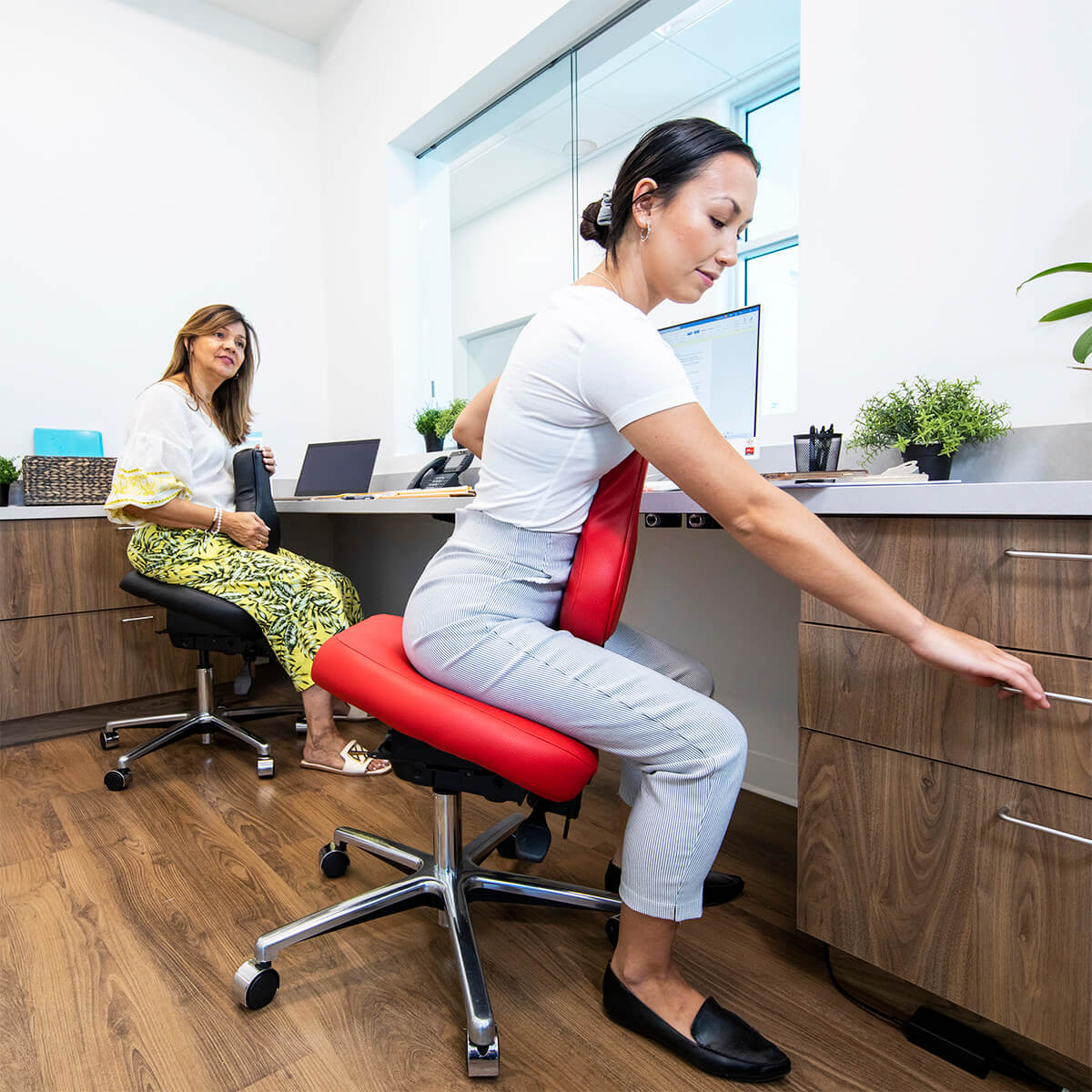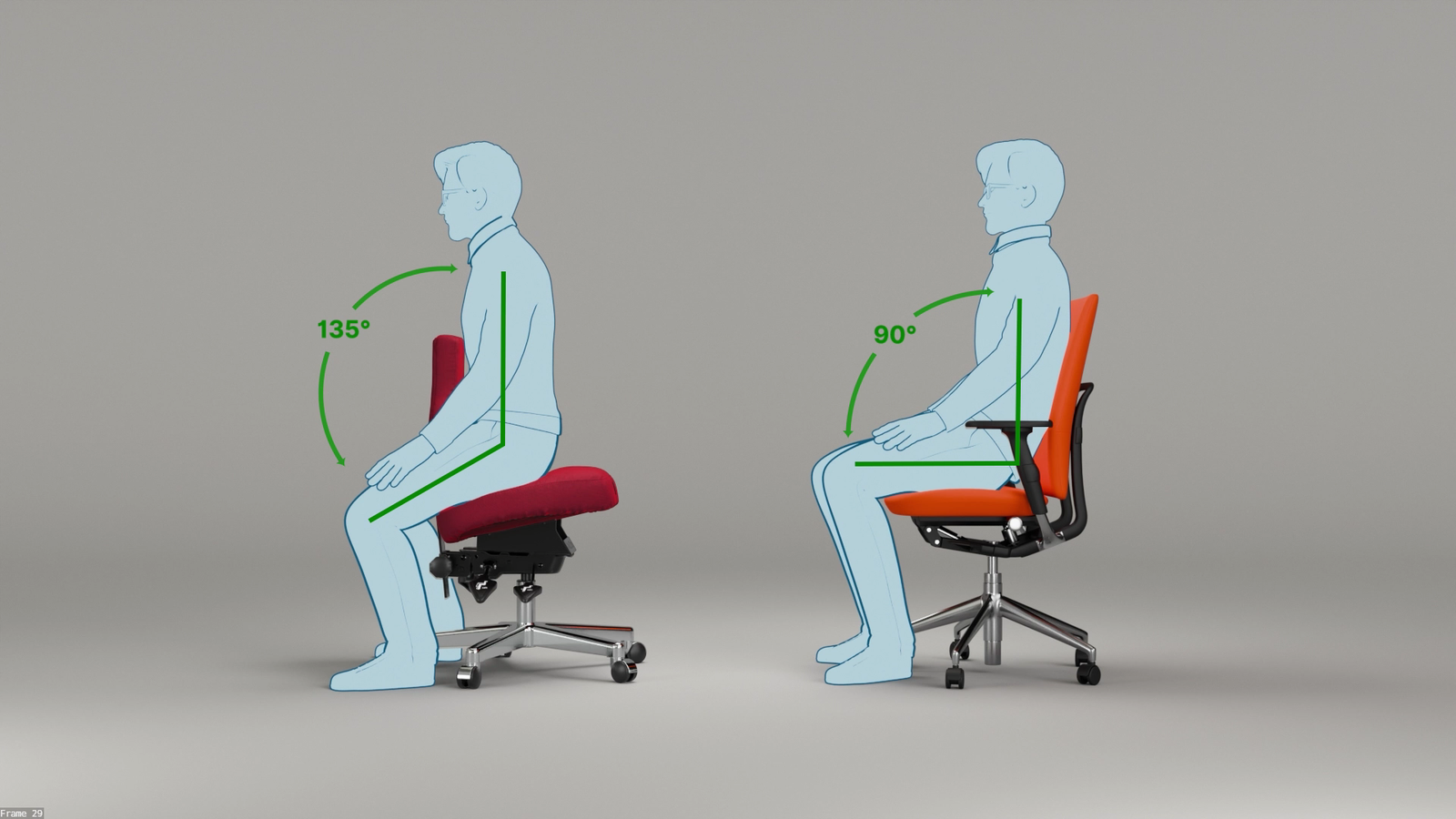This Fitness Friday, we’re diving into a deceptively simple but highly beneficial exercise: the pelvic tilt. Often overlooked, this exercise can work wonders for your core strength, posture, and overall stability. This is especially true when combined with regular usage of yourNuChair for back pain relief. Whether you’re experiencing lower back pain or just looking to improve your fitness, the pelvic tilt is a versatile move that you can incorporate into your routine with ease.
Here's how to make the pelvic tilt your go-to exercise for a healthier, more balanced body.
Step-by-Step Guide to the Perfect Pelvic Tilt
Are you ready to master the pelvic tilt? Let’s break it down into manageable steps to ensure you get the most out of this exercise.
Setting Up for Success
To start:
1.Find a Comfortable Space:
Choose a spot where you can lie down comfortably, such as a yoga mat on a carpeted floor. Make sure you have a bit of space around you so you can move freely.
2.Position Yourself Correctly:
Lie on your back with your knees bent and feet flat on the floor, hip-width apart. Your arms should rest by your sides, and your palms should face down. This is your starting position.
3.Engage Your Core:
Before you begin the movement, engage your core muscles by pulling your belly button slightly in towards your spine. This will help stabilize your lower back and spine.
Executing the Pelvic Tilt Correctly
Follow these steps to perfect the move:
1.Begin the Tilt:
Inhale deeply, and as you exhale, gently tilt your pelvis backward by flattening your lower back against the floor. Imagine trying to press your navel into the ground.
2.Hold and Feel the Stretch:
Hold this position for a couple of seconds. You should feel a gentle stretch in your lower back and activation in your core muscles.
3.Return to the Starting Position:
Slowly tilt your pelvis forward to return to the starting position. Your lower back will arch slightly off the floor.
4.Repeat:
Perform this movement in a controlled manner, repeating for 10-15 repetitions for optimal results.
Common Mistakes to Avoid
To make sure you get the most out of your pelvic tilt exercise, steer clear of these common pitfalls:
-Overarching the Back:
Avoid excessive arching of the lower back. The movement should be subtle, focusing on the engagement of the core rather than an exaggerated motion.
-Holding Your Breath:
Maintain a steady, controlled breathing pattern. Breathe in as you tilt your pelvis forward, and exhale as you flatten your back against the floor.
-Using the Wrong Muscles:
Ensure you're engaging your core, and not overly straining your glutes or thighs. The focus should be on your abdominal muscles working to tilt your pelvis.
Embarking on your pelvic tilt journey can significantly enhance your core strength and stability, leading to better posture and reduced back pain. Remember, consistency and proper form are key to maximizing the benefits of this exercise.
Pelvic Tilt for Back Pain Relief
The pelvic tilt exercise is not just for those looking to tone their abs. It’s a remarkably effective way to relieve back pain and improve spinal health.
How it Supports Back Health
The pelvic tilt stretches and strengthens the lower back and abdominal muscles, creating a balanced synergy that supports your spine. By properly aligning your pelvis and engaging your core, you alleviate pressure on your lower back, reducing pain and discomfort.
Plainly put, a strong core equals a strong back. The pelvic tilt helps correct poor posture by encouraging a neutral spine position, which is crucial for everyday activities. Whether you’re sitting at a desk, lifting groceries, or enjoying a round of golf, this exercise makes those movements easier and safer.
NuChair's Spinal Thought
Incorporating pelvic tilts into your daily life is a wonderful way to enhance your fitness routine and bolster core stability, balance, and posture. Pairing this simple exercise with the ergonomic support provided by theNuChair, you're setting yourself up for a stronger body and a happier spine.











